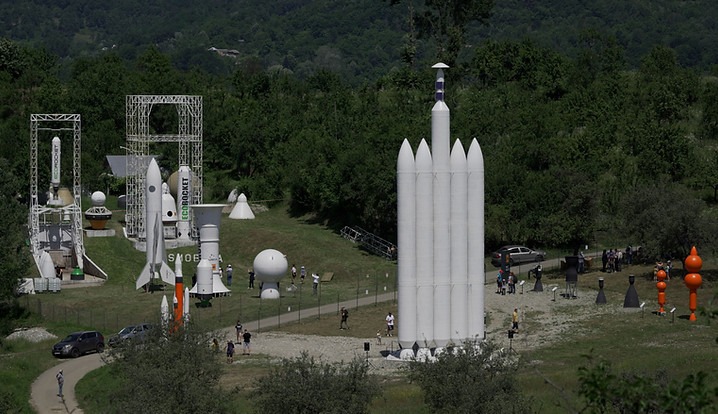ABOUT US
Engineering the Future
ArcaSpace is a high-tech research non-profit that develops technologies for space exploration, aeronautics, defense, and ground transportation, with the main focus on space resources exploitation, centered, unlike traditional aerospace industry, on eco-friendliness and cost-effectiveness, so we can open the access to the vast space resources and answer to humanity’s pressing issue of resources depletion.
By incorporating our vast experience of 25 years of aerospace and defense activity, we create unprecedentedly eco-friendly and cost effective space flight, space resources exploitation and strategic defense technologies.


Our core values are INNOVATION and DETERMINATION.
INNOVATION led to the creation of ecological and extremely cost effective aerospace technologies and state of the art consumer products, while DETERMINATION made us relentlessly push forward toward succes.
ArcaSpace's motto is:
Engineering the Future
More about our brand in the ArcaSpace Brand Guidelines:
2002 - 2004
During the 10 million $ Ansari X Prize Competition, ArcaSpace designed and successfully launched its first rocket, Demonstrator 2B from Cape Midia Air Force Base.

2006 - 2007
ArcaSpace built the world's largest solar balloon that lifted into the stratosphere the crew capsule of Stabilo, a manned suborbital vehicle created after the end of Ansari X Prize Competition. The Stabilo program continued in 2007 at ArcaSpace, this time with an even larger solar balloon lifting the complete Stabilo vehicle into the stratosphere, involving for the first time the Navy for the vehicle recovery from the sea.

2008 - 2010
ArcaSpace joined the $30 million Google Lunar X Prize Competition and in 2013 the team withdrew from the Competition after it launched a technological demonstrator rocket. ArcaSpace's Helen rocket was launched at 40,000m (120,000ft), the event representing the first powered flight in the Google Lunar X Prize Competition. The rocket was transported into the stratosphere with the help of an ArcaSpace built helium balloon.

2012
Haas rocket series was introduced by ArcaSpace consisting of the sub-orbital Haas 2B and orbital Haas 2C launchers.

2013
The European Space Agency (ESA) awarded ArcaSpace with a contract to test the parachutes system for the ExoMars spacecraft that launched to Mars in 2016. ArcaSpace developed the hardware to perform the flight tests for the High Altitude Drop Test (HADT).

2013 - 2016
ARCA Space Corporation was incorporated in the United States, New Mexico, as a for-profit corporation.
AirStrato large drone performed the first flight at the beginning of this year and it became ArcaSpace's first product to become commercially available. The aircraft was transferred to the newly created ARCA Space Corporation in the United States and then sold to a US telecommunication company.

2015-2017
ARCA Space Corporation created the ArcaBoard, the world's first real hoverboard commercially available. The company signed in 2017 a contract with DARPA and US Army for this technology, ultimately aiming to improve the mobility and responsiveness of US troops on the battlefield.

2018-2019
ArcaSpace built and tested the Launch Assist System (LAS) as an ecological, water-based electric rocket built in two versions, using a classic bell-shaped nozzle engine and an aerospike engine. LAS is used as first stage for the Haas rocket series, reducing the use of polluting propellants with up to 50% and reducing the launch cost almost fivefold.

2020-2025
ArcaSpace announced the EcoRocket on November 17, 2020. This is a small orbital rocket designed around two main features: cost-effectiveness and eco-friendliness, able to launch 10 kg to LEO.
The first two stages are reusable and use water-based propulsion technology that generates water vapours through cold reaction. The expandable third stage uses conventional hot rocket propulsion and it's ignited at high altitude, above the thick atmosphere. Both the first and second stage use the high efficiency aerospike engine technology. The whole rocket uses 86% water-based propellant. ArcaSpace tested this technology at full-scale.
The whole program development cost only EUR 1 million, and the cost/launch was set at $490,000.
ArcaSpace also announced that is developing a heavy version of EcoRocket that was announced in 2022 during the AMi Exploration Keynote.

